What You Need to Know About Boat Propellers, Part 1

Nothing other than the engine itself affects the performance of a powerboat more than the propeller, aka “prop”, “screw” or “wheel”, yet they are often an afterthought when it comes to fitting out a new boat.
Whether you run a 75-mph bass boat or a 70’ (21.34 m) LRC that rarely exceeds displacement speed, the right prop(s) will make a huge impact on the fuel efficiency and speed as well as on the boat’s handling in rough water, in tight corners and while docking.
Here are some of the basics you’ll want to know when you go propeller-shopping.
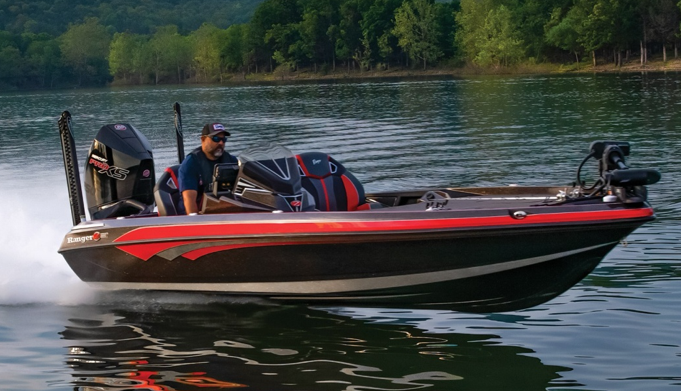
In general, propellers for planing hulls are engineered to provide quick planing or “holeshot”, lots of bow lift on plane, strong top speed and the capability to hold in tight corners without losing their grip on the water. (A new type of propeller, the continuous-blade stainless steel models from Sharrow Marine, is in a class of its own, which we’ll talk about in Part II.)
Propellers for large displacement boats, on the other hand, are aimed at fuel efficiency, the capability to grip the water and drive the boat through large seas, and the ability to provide strong reverse thrust necessary for stopping and docking.
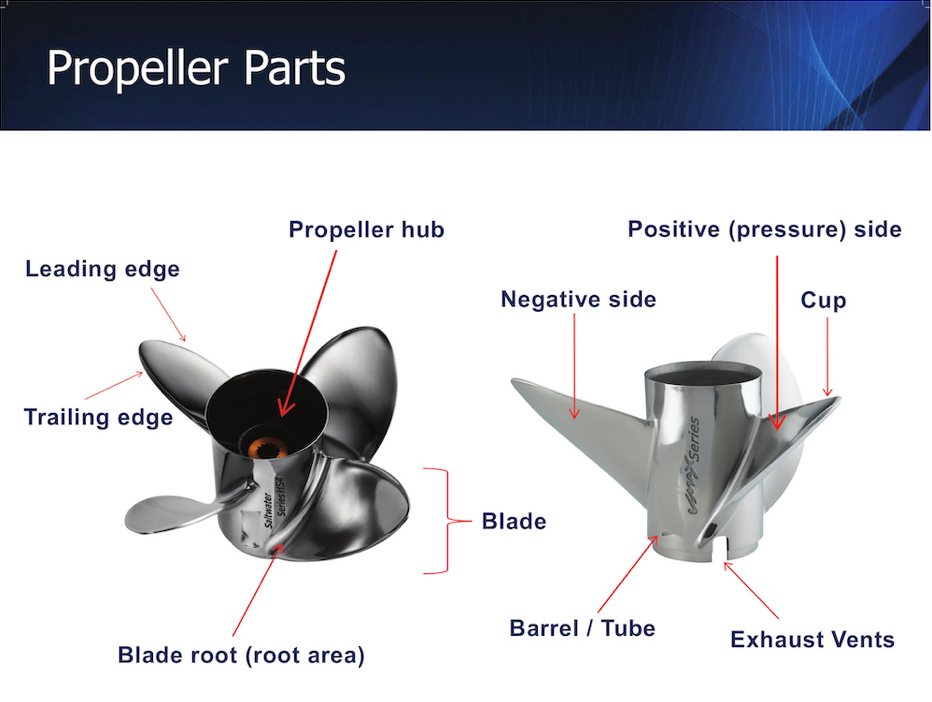
Conventional propeller design is affected by seven basic parameters, along with a number of more esoteric factors:
- Blade Count
- Diameter
- Pitch
- Cup
- Rake
- Slip
- Rotational Direction
Blade Count
When it comes to blade count, most planing boat propellers today have three blades, delivering a good combination of power, speed, efficiency and minimal vibration.
However, four-blade props are common for heavier boats that need more stern lift to get on plane. Four-blade models tend to run with less vibration as well.
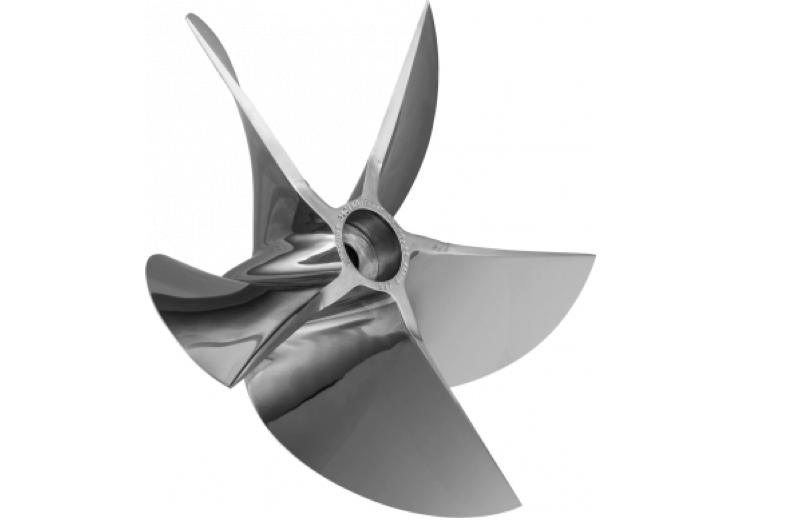
Five-blade up to eight-blade props are the province of larger yachts and work boats, designed to push very heavy displacement boats in rough conditions as well as to improve handling in the harbor. In general, the added blades also deliver smoother operation.
Diameter
The diameter of a propeller is twice the radius from the center of the prop to the tip of one of the blades. Propeller engineers tell us that it’s the most significant factor in propeller performance for boats running anywhere from idle speed to about 35 knots.
A larger-diameter prop is more effective at controlling low-speed operation like docking where you need to stop, back up and kick the stern to one side or the other. In other words, the larger the better on inboard displacement boats
Pitch
Pitch is the theoretical distance the prop would travel forward in one rotation if there were no slip. Higher-pitch propellers can push a boat faster provided the horsepower is matched to the prop so the engine can reach maximum recommended rpm. In general, for outboard and sterndrive powered boats, a 2” (5.08 cm) increase in pitch will reduce engine rpm by 300 to 400. Conversely, a 2” (5.08 cm) decrease in pitch will result in a 300- to 400-rpm increase.
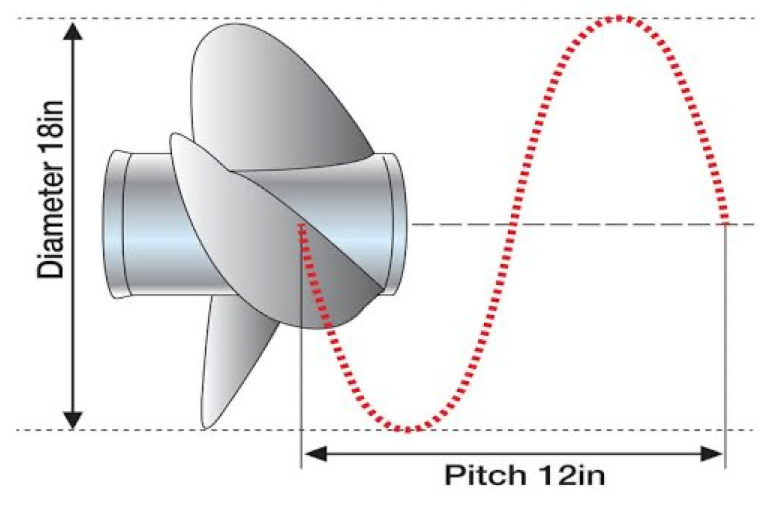
Diameter and pitch are inversely related for a given boat/power package. As a rule of thumb, if you go up 1” (2.54 cm) in diameter, you go down 2” (5.08 cm) in pitch to attain the same maximum rpm.
On planing boats, if your boat has hole shot problems, you probably need less pitch or more blades. If you boat does not go as fast as you’d like it to, you need more pitch and fewer blades, though note there are limited returns because with too much pitch you can’t get on plane.
Cup
Cup is a curl formed or cast into the trailing edge of a propeller blade. The face of a cupped prop blade is concaved. More cup effectively adds more pitch to a given prop, increasing speed if adequate power is available to reach maximum rpm. Cupping also reduces the tendency to cavitate, which can damage the blades.
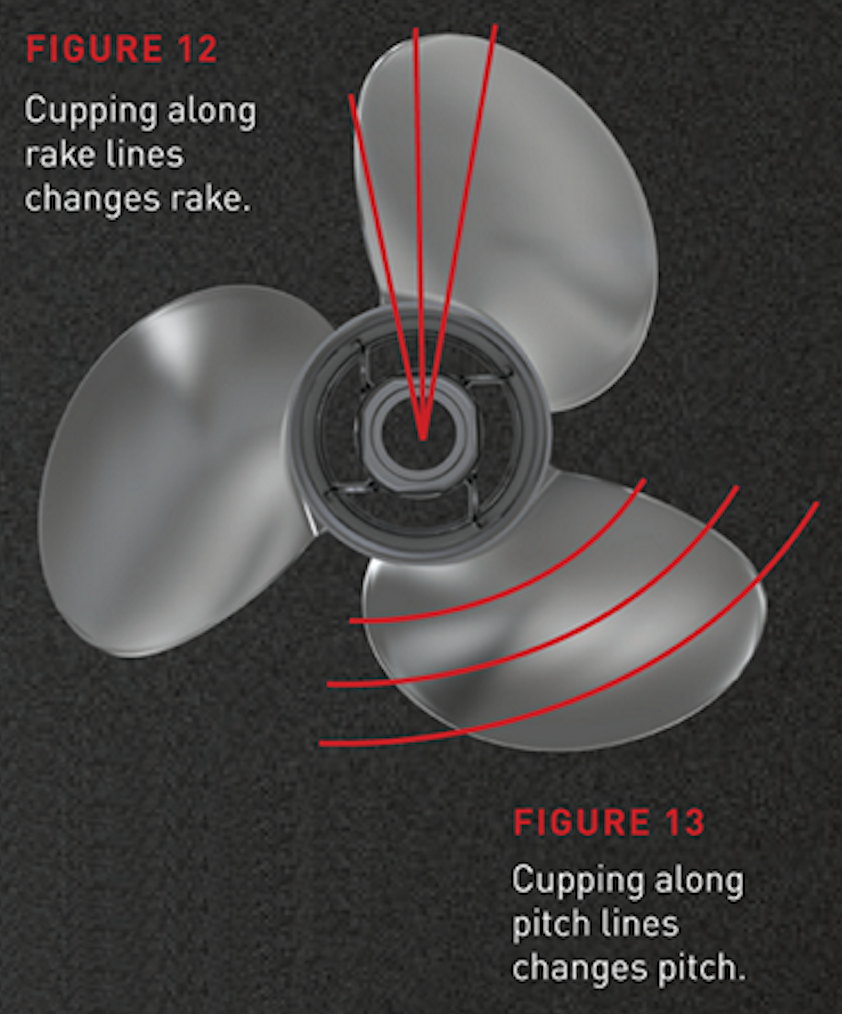
Rake
Rake is the angle of a propeller-blade face relative to its hub. If the blade face is perpendicular to the hub, the prop has zero-degree rake. As a blade face slants back toward the rear of the prop, blade rake increases. Rake is either flat (straight) or curved (progressive).
More rake effectively adds a bit to the diameter of a given prop, thus can help improve available thrust on boats where a larger diameter prop won’t fit.
Slip
Slip is the difference between the actual distance the prop travels forward through the water versus the distance it should theoretically travel based on the prop blades’ angle of attack.
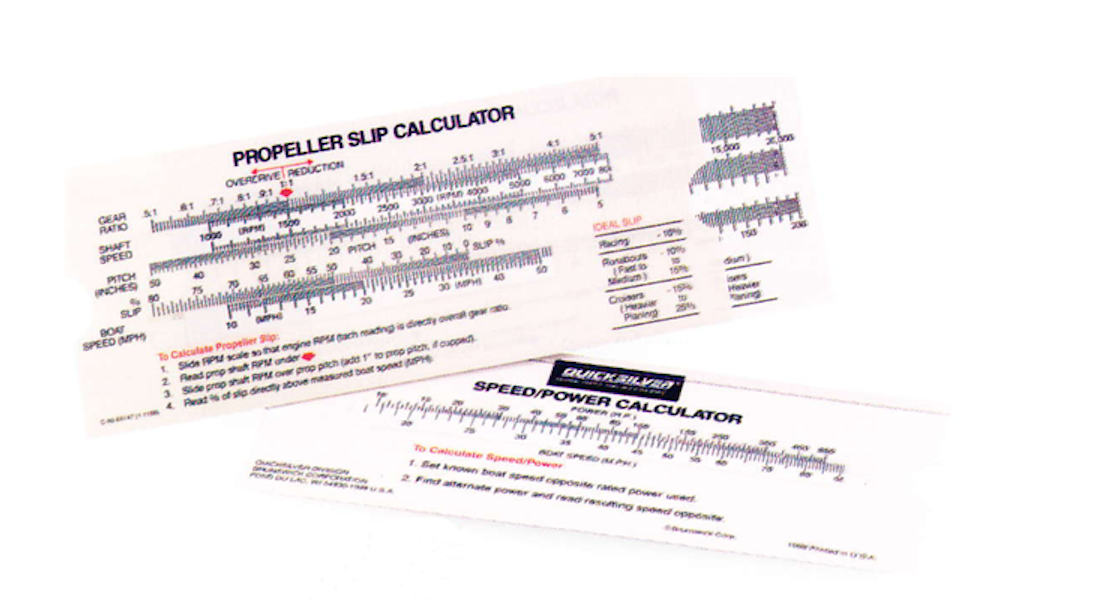
The theoretical travel is determined by the prop pitch. Water is not a solid medium, so the prop can’t be 100% efficient as is a screw in wood. A 16” (40.64 cm) pitch prop might only push the boat 14” (35.56 cm) forward per turn.
Slip can be 20% to 40% in displacement operation and typically around 10% for boats on plane. Note that at least some slip is necessary for a propeller to function — Mercury engineers say between 5% and 25% is acceptable for their vast lineup of propellers.
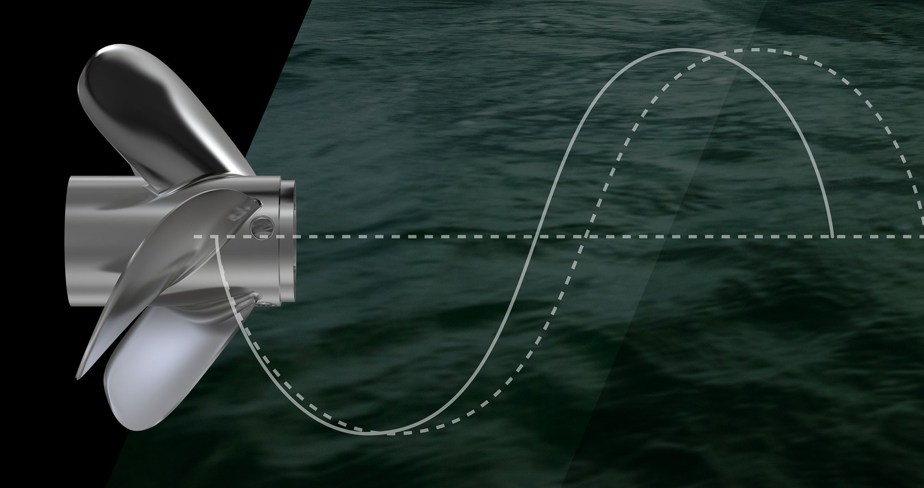
Rotation
Rotation is the direction the prop is designed to turn, viewed from behind the boat. Most props for single-engine boats are right-hand rotation. Twin-engine boats typically have counter-rotating props with the wheels turning toward the outside of the boat for each engine.
These numbers are usually embossed into the barrel of the prop, with the diameter first, followed by the rotation direction and then the pitch. For example, 16RH x 18 designates a 16” (40.64 cm) diameter right-hand propeller with an 18” (45.72 cm) pitch.
In general, adding pitch or blades means decreasing the diameter of a prop to allow a given engine to reach its recommended maximum rpm. A lower pitch or fewer blades means the prop’s diameter can be larger for a given power package.

While considering these and other variables is the province of naval architects, there are numerous online calculators that can quickly put you in the ballpark on props that will work for the boat and engine package you own. And many prop shops will allow you to trade out an undamaged prop if you find you need a slightly different combination.
Propeller Alloys
Recreational boat propellers are made of aluminum, stainless steel, bronze or Nibral, a nickel, bronze and aluminum alloy. Each material has advantages and negatives.
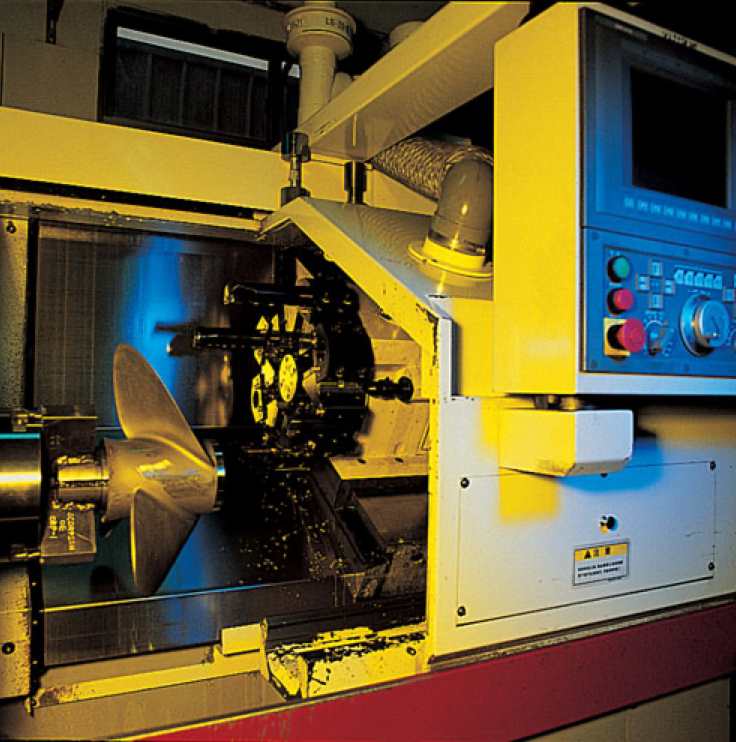
The Aluminum Advantage
Aluminum propellers are economical compared to those made of other materials and are the most common prop in entry-level package boats for fishing and general recreational use. They’re light and available in a wide variety of styles, diameters and pitches.
For boaters who operate in areas where contact with floating logs, stumps, rocks or hard bottom are unlikely, aluminum props can be a good first option.
They also offer an inexpensive choice for those who want to carry a (highly recommended) spare prop aboard.

That said, there are better options for those who want improved performance as well as those who need greater durability.
Aluminum props can be repaired if damaged, but the cost is typically almost equal to the cost of a new prop, at around $100 to $150 — in general, it doesn’t make sense to repair them.
Stainless Steel — Strong and Versatile
Stainless steel props are the universal choice for outboard and sterndrive performance boats, bass boats, bay boats, offshore fishing boats, high end pontoons and many others. They are far stronger than aluminum, but cost three to four times as much.

They can also be cast with much thinner blades and with more cup and rake, considerably improving performance over thicker aluminum prop blades. If they’re damaged, it’s likely to be a dented or torn blade that can readily be repaired by a prop shop. And since stainless props for small boats cost $350 to $700, spending $100 to $150 for repair is worth doing.
Bronze and Nibral Props — Cost Effective and Strong
Bronze, an alloy of copper and tin, makes strong, cost-effective propellers that are corrosion resistant and durable. They’re primarily found on inboard boats, ski boats and on larger yachts.
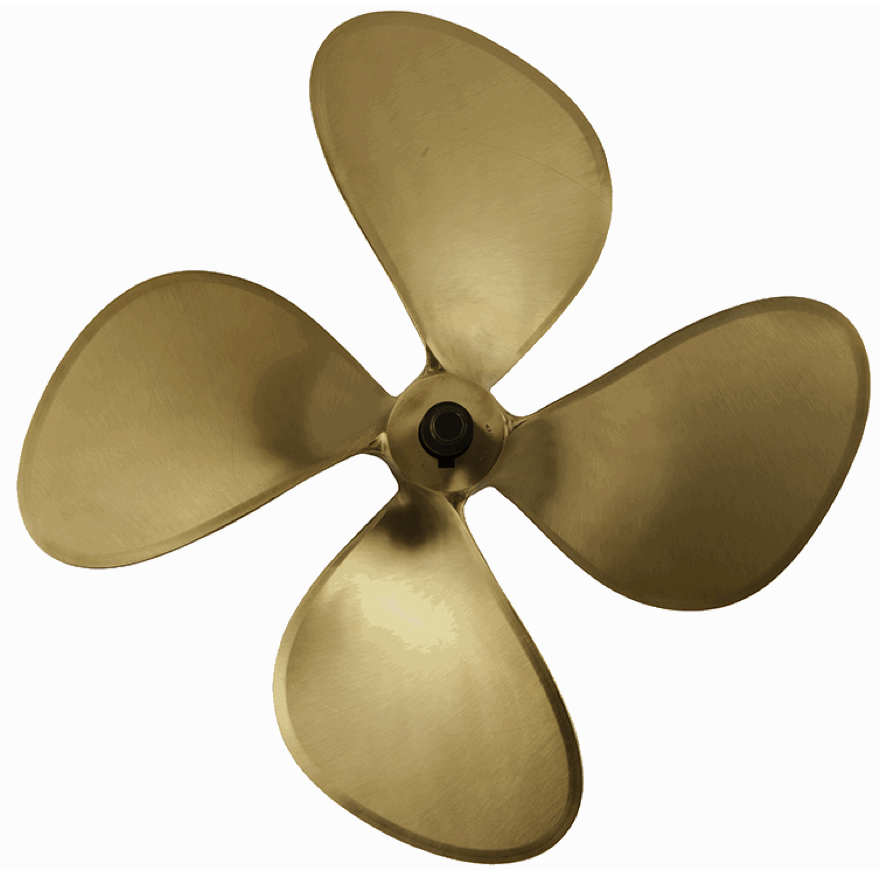
Nibral is an alloy of nickel, bronze, and aluminum. While nibral and bronze props look much alike, nibral is harder, stronger and more corrosion resistant.
The purchase cost of a nibral inboard propeller will be higher than bronze, as will repair work you may need done in the future.
Nibral is stronger than bronze so the propellers blades can be made thinner and more efficient, somewhat like comparing a stainless steel propeller to an aluminum propeller on an outboard or sterndrive.
Bronze and nibral props are the province of larger yachts and offshore sportfishing boats, as well as inboard watersports tow and wake boats. The reason is that both are much softer than stainless steel, so function as the point of failure on a hard prop strike, protecting the much more expensive transmission and gearing from damage that might result with a stainless-prop strike.

Propeller Manufacturers
With these basics of marine propellers in hand, let’s take a look at the major players in the market:

Acme Propellers makes ski-boat propellers in nibral using a CNC process to dial in incremental changes in pitch, cup and other parameters to develop an optimum propeller for each specific engine and make and model of boat. They also make cruiser props in 16” (40.64 cm) to 34.5” (87.63 cm) diameter; https://acmemarine.com.
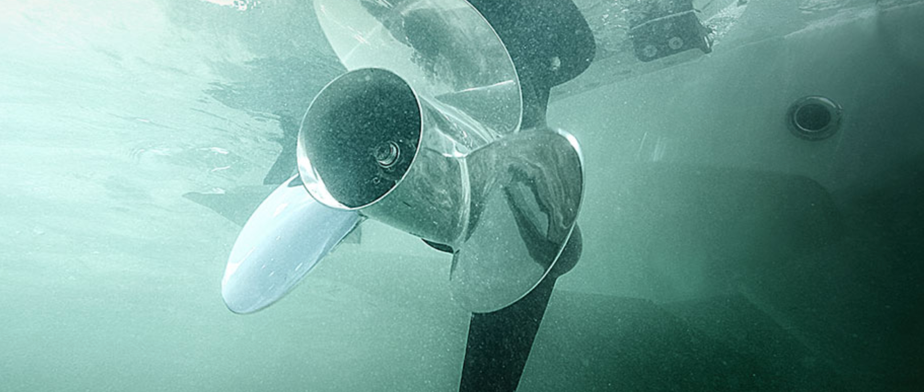
Mercury Marine is the big dog in outboard and sterndrive propellers, with millions of aluminum and stainless-steel wheels turning on boats worldwide. The company has an online prop selector that provides basic guidance to get you started in selection — see it here: https://www.mercurymarine.com/en/us/propellers/selector/#!/step-one
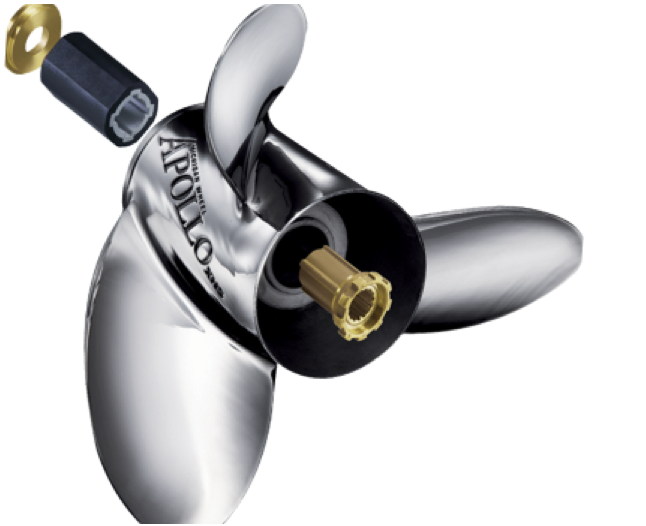
Michigan Wheel makes a huge variety of outboard, sterndrive and inboard propellers from 3” (7.62 cm) to 96” (243.84 cm) diameter, cast in aluminum, stainless and nibral. Its larger props are made to order for specific yacht/power combinations after consultation with the company’s naval architects and have a 3- to 4-month lead time. See the Michigan Wheel prop selection guides; https://www.miwheel.com.
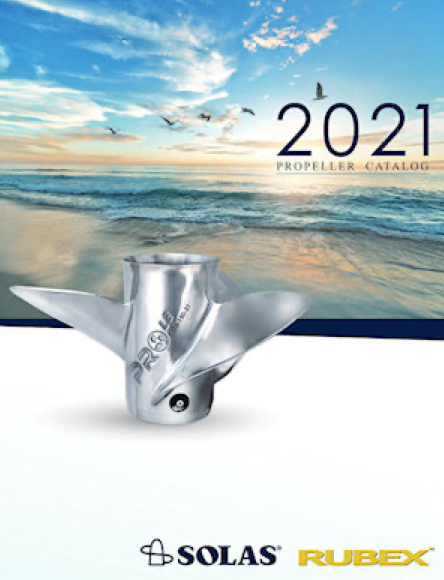
Solas makes most of the props used on Honda outboards, as well as for many other applications. It offers aluminum and stainless steel in fixed hub and interchangeable hub models. See the Solas prop finder program here: https://www.solaspropellers.com/index.php/boat/prop-finder
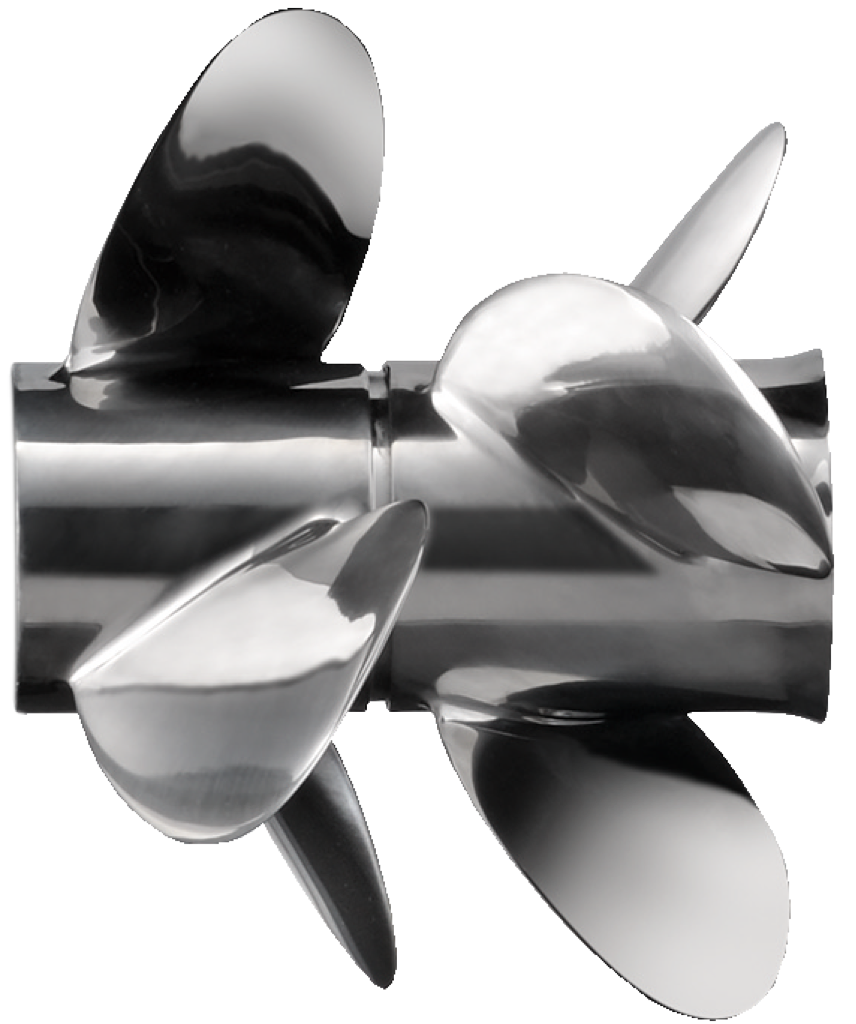
Suzuki offers economical aluminum props starting at less than $180 for its outboards, as well as a good selection of high-strength stainless-steel models. Suzuki also has counter-rotating stainless steel props for its D350-A V6; www.suzukimarine.com.
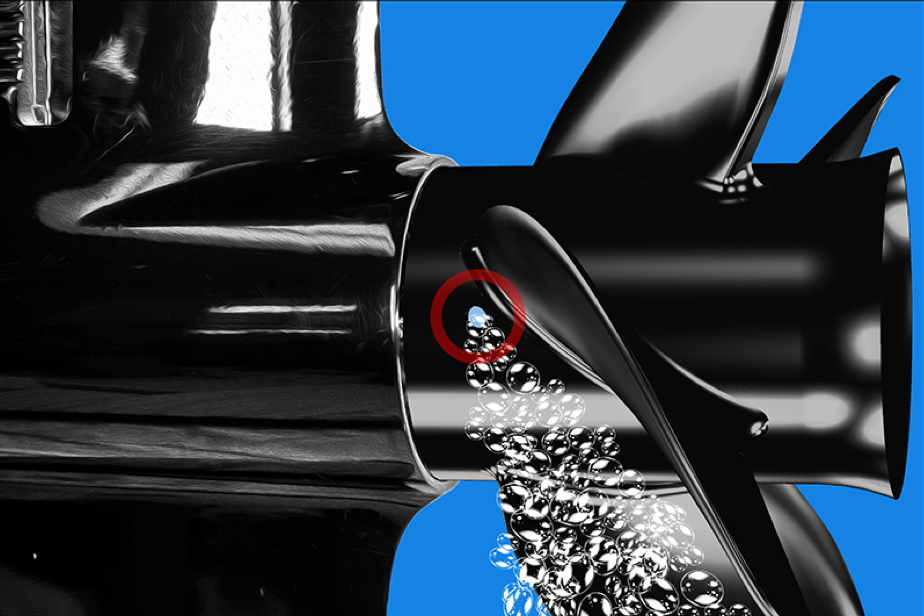
Turning Point makes Hustler aluminum props, noted for high-performance design usually only found on stainless props. It also has Express stainless-steel props in a variety of diameters and pitches suitable for outboards and sterndrives; https://turningpointpropellers.com
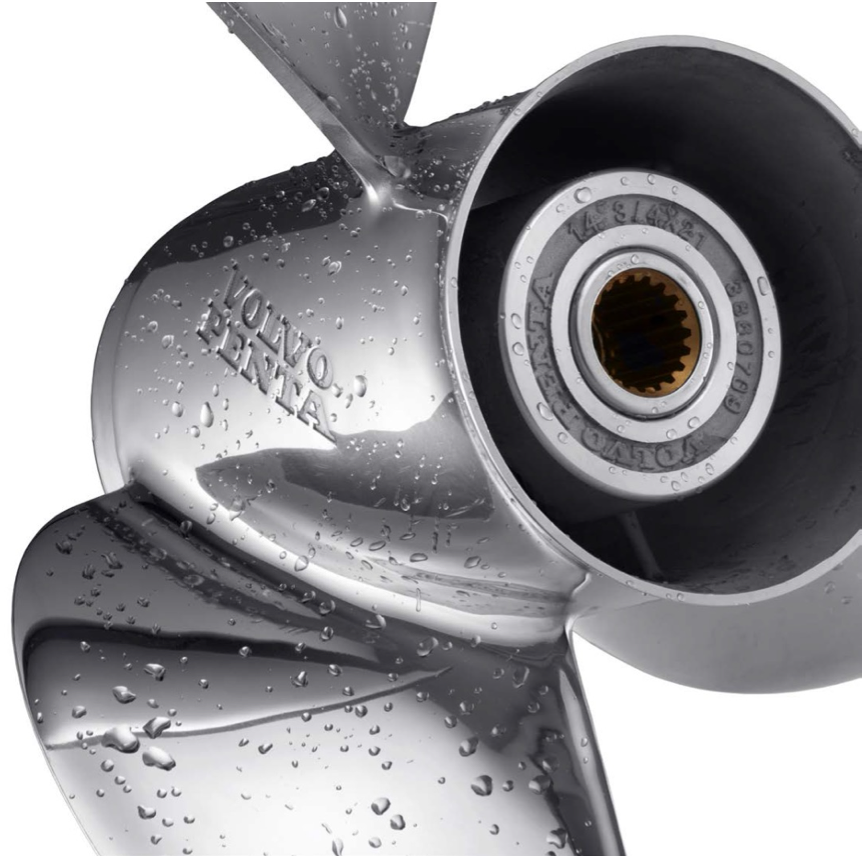
Volvo Penta makes single and DuoProp propellers for its Aquamatic Sterndrives in aluminum, stainless steel or nibral, plus nibral propeller sets for its IPS pod systems and folding and fixed propellers for its Saildrive engines. Check out Volvo Penta’s propeller guide here: file:///C:/Users/Owner/AppData/Local/Temp/propeller-guide.pdf
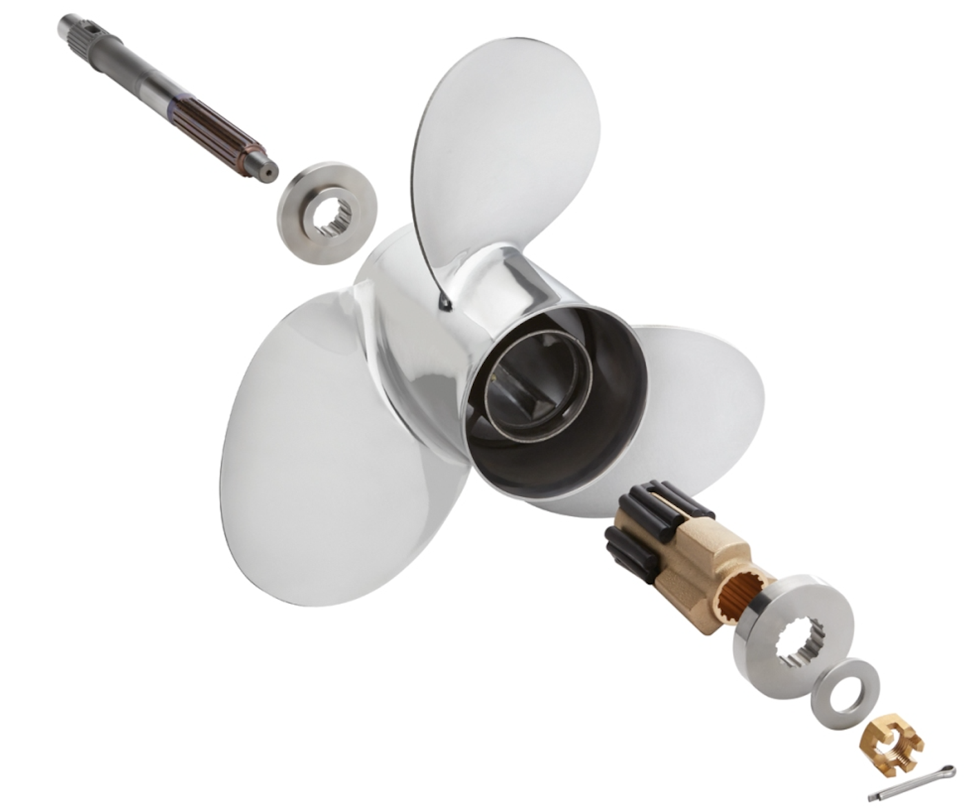
Yamaha makes a full line of props engineered to produce maximum performance on their outboards from the tiny 2.5 hp to the big 425-hp V8. See their prop selection tool here: https://www.yamahapropselector.com/propSelector/web.
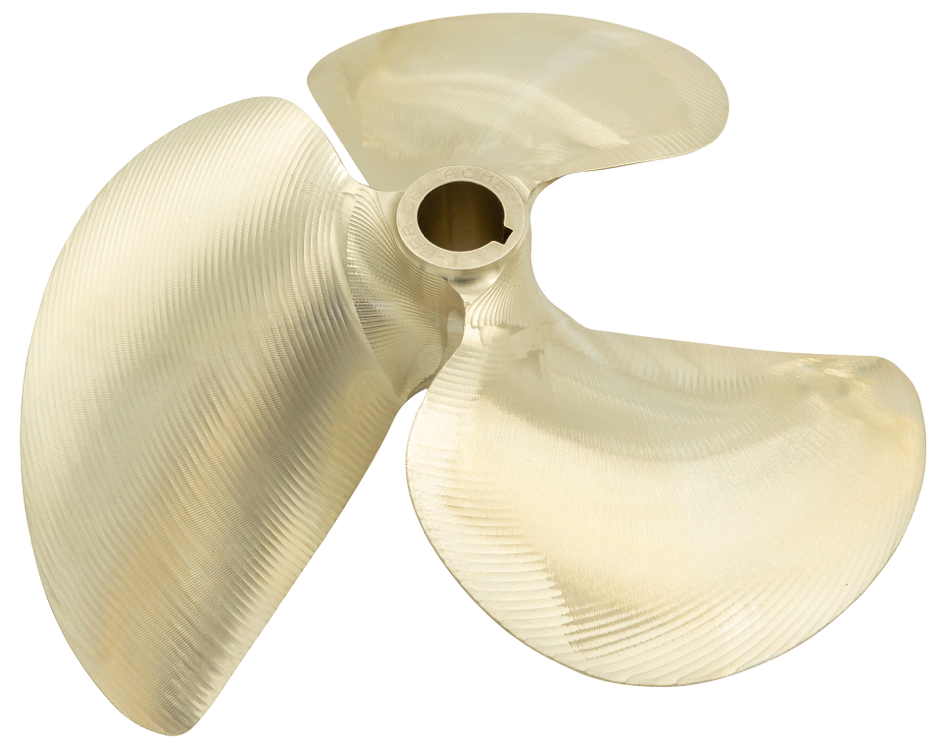
Acme 425 Wake Boat propeller offers a customization chart on their website at https://acmemarine.com allowing buyers to fit the prop to the desired wake.